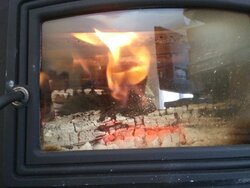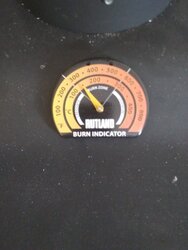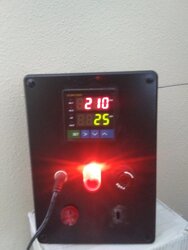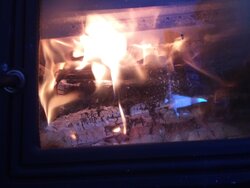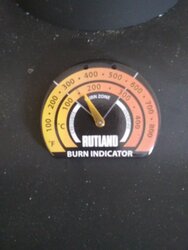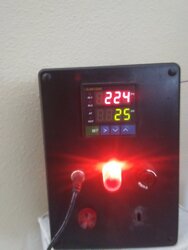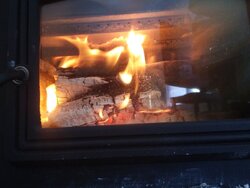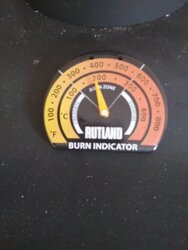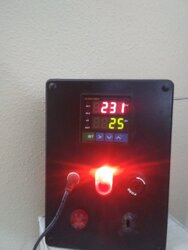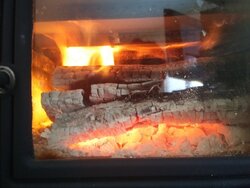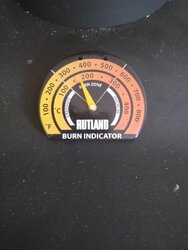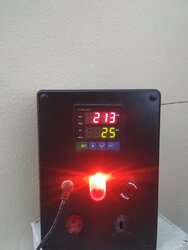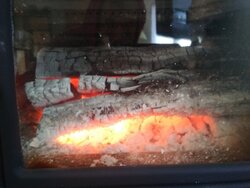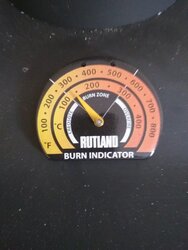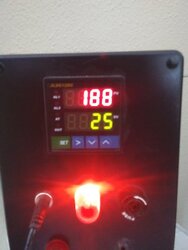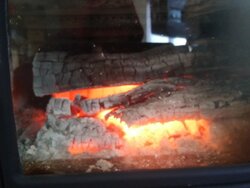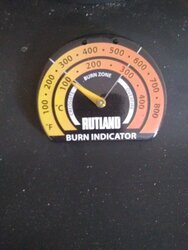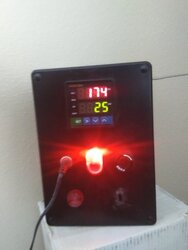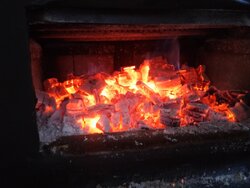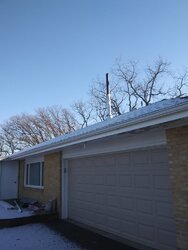My Chimney Extension experiment
Begreen had suggested that I try temporarily extending my chimney to see if that helped with my draft. I used two sections of stove pipe stuck in my chimney pipe.
My Stove: Pleasant Hearth WS 2417
My Chimney Height: 13 feet above stove top. (5 feet of stove pipe; 8 feet of Selkirk 6 inch diameter chimney; Deluxe rain cap.
--Removed rain cap and stuck 48 inches of stove pipe into end of chimney.--
My Wood: Walnut 15.5%
Hickory 17.3%
Wood was brought inside house; left overnight; split; Used SBI moisture meter.
(Wood that was split, then left overnight inside registered about 2% dryer than above readings.)
I recently did the dollar bill test. The bill would not slide anywhere along the door edge.
The digital reading is a PID connected to a thermo coupler attached to my stove pipe about 4 inches above the stovetop.
The Rutland is centered on top of the stove.
I used an IR device to double check my temperature readings. The IR device backs up the readings.
I took pictures every ten minutes after I got the stove up to heat and had shut down the primary air vent. The pictures show the results.
I did the same thing earlier in the day without the extension. Results were pretty much the same. Lose flames and then heat after about ½ hour.
I have never hit 400 degrees on the stove top.
1:08 pm Primary air fully shut down
Begreen had suggested that I try temporarily extending my chimney to see if that helped with my draft. I used two sections of stove pipe stuck in my chimney pipe.
My Stove: Pleasant Hearth WS 2417
My Chimney Height: 13 feet above stove top. (5 feet of stove pipe; 8 feet of Selkirk 6 inch diameter chimney; Deluxe rain cap.
--Removed rain cap and stuck 48 inches of stove pipe into end of chimney.--
My Wood: Walnut 15.5%
Hickory 17.3%
Wood was brought inside house; left overnight; split; Used SBI moisture meter.
(Wood that was split, then left overnight inside registered about 2% dryer than above readings.)
I recently did the dollar bill test. The bill would not slide anywhere along the door edge.
The digital reading is a PID connected to a thermo coupler attached to my stove pipe about 4 inches above the stovetop.
The Rutland is centered on top of the stove.
I used an IR device to double check my temperature readings. The IR device backs up the readings.
I took pictures every ten minutes after I got the stove up to heat and had shut down the primary air vent. The pictures show the results.
I did the same thing earlier in the day without the extension. Results were pretty much the same. Lose flames and then heat after about ½ hour.
I have never hit 400 degrees on the stove top.
1:08 pm Primary air fully shut down
Attachments
Last edited:


